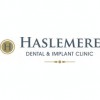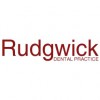Our Petworth based practice offers superior dental care in an incredibly relaxed and welcoming environment. We provide a comprehensive collection of preventive, restorative and cosmetic treatments to help keep your teeth both healthy and beautiful. When Michael Donovan bought the practice in 1992, we were originally located in Market Square in Petworth.
In 2006, we moved to our current modern premises on the corner of Middle Street. Michael's wife, Jayne, is also heavily involved in Donovan's Dental as she is one of our dental nurses and our Practice Manager. She keeps a watchful eye on the practice, ensuring it always runs smoothly and that we continue to maintain the highest possible standards.
We have recently had our second CQC inspection and have received five green ticks - this is the highest level that can be awarded.
In 2006, we moved to our current modern premises on the corner of Middle Street. Michael's wife, Jayne, is also heavily involved in Donovan's Dental as she is one of our dental nurses and our Practice Manager. She keeps a watchful eye on the practice, ensuring it always runs smoothly and that we continue to maintain the highest possible standards.
We have recently had our second CQC inspection and have received five green ticks - this is the highest level that can be awarded.
Services
We love seeing new patients at our practice and will always greet you with broad smiles and a warm welcome.
When you visit us for the first time, you will feel immediately at ease in our calm, relaxing setting.
Your first consultation will last a little longer as your dentist will take around 30 minutes to check for signs of gum disease and tooth decay.
They will also screen your soft and hard tissues for any possible abnormalities.
In addition, two bitewing radiographs and a panoral radiograph will be taken, and finally, they will assess your bite and jaw.
When you visit us for the first time, you will feel immediately at ease in our calm, relaxing setting.
Your first consultation will last a little longer as your dentist will take around 30 minutes to check for signs of gum disease and tooth decay.
They will also screen your soft and hard tissues for any possible abnormalities.
In addition, two bitewing radiographs and a panoral radiograph will be taken, and finally, they will assess your bite and jaw.
Inlays and onlays (also known as indirect fillings) can be used to restore areas of decay or damage that are too extensive to be treated with a normal filling and can provide a less invasive, more affordable alternative to a crown.
A long-lasting restorative solution, they are usually placed in teeth at the back of the mouth or can be used to repair large areas on the front teeth.
Unlike a filling, inlays and onlays are created outside the mouth from an impression taken of the tooth.
An inlay is cemented within the cavity and an onlay covers more of the tooth for when the repair needs to include one or more cusps (the points of the tooth), or fully cover the biting surface.
A long-lasting restorative solution, they are usually placed in teeth at the back of the mouth or can be used to repair large areas on the front teeth.
Unlike a filling, inlays and onlays are created outside the mouth from an impression taken of the tooth.
An inlay is cemented within the cavity and an onlay covers more of the tooth for when the repair needs to include one or more cusps (the points of the tooth), or fully cover the biting surface.
Root canal therapy (or endodontics) can help prevent a tooth from being extracted by removing infected or inflamed pulp from inside the tooth.
Full of nerves and blood vessels, the pulp is the 'living' tissue at the heart of the tooth.
It can become infected due to bacteria entering via areas of decay, a deep filling or damage to the tooth.
Once we have removed the pulp, we seal the root and then finish off with a permanent filling or crown, ensuring the tooth is kept well-protected in future.
Even though the pulp is removed, the tooth remains functional as it is kept nourished by the surrounding vital tissues.
Full of nerves and blood vessels, the pulp is the 'living' tissue at the heart of the tooth.
It can become infected due to bacteria entering via areas of decay, a deep filling or damage to the tooth.
Once we have removed the pulp, we seal the root and then finish off with a permanent filling or crown, ensuring the tooth is kept well-protected in future.
Even though the pulp is removed, the tooth remains functional as it is kept nourished by the surrounding vital tissues.
We can use natural-looking white fillings to treat cavities without ruining your smile.
These subtle fillings blend in perfectly with the surrounding teeth and also strengthen and restore a damaged tooth.
We place white fillings by layering a composite resin on to the cavity.
We finish this process by hardening the carefully applied resin with a special bright light.
We have been an amalgam-free practice for over ten years, so if you have any concerns about the safety of amalgam, you'll have no need to worry at Donovan's Dental.
These subtle fillings blend in perfectly with the surrounding teeth and also strengthen and restore a damaged tooth.
We place white fillings by layering a composite resin on to the cavity.
We finish this process by hardening the carefully applied resin with a special bright light.
We have been an amalgam-free practice for over ten years, so if you have any concerns about the safety of amalgam, you'll have no need to worry at Donovan's Dental.
More room is needed for successful orthodontic treatment or to ensure new dentures fit properly.
We take an x-ray and assess your teeth to ascertain the best method of removal, which will either be a simple extraction or a surgical extraction.
A simple extraction is performed on a tooth that is visible in the mouth.
It involves loosening the tooth and removing it with dental forceps under local anaesthetic.
A surgical extraction involves making a small incision in the gum to remove a tooth that may have broken off or is concealed under the gum.
We take an x-ray and assess your teeth to ascertain the best method of removal, which will either be a simple extraction or a surgical extraction.
A simple extraction is performed on a tooth that is visible in the mouth.
It involves loosening the tooth and removing it with dental forceps under local anaesthetic.
A surgical extraction involves making a small incision in the gum to remove a tooth that may have broken off or is concealed under the gum.
Reviews

Be the first to review Donovan's Dental Practice.
Write a Review




